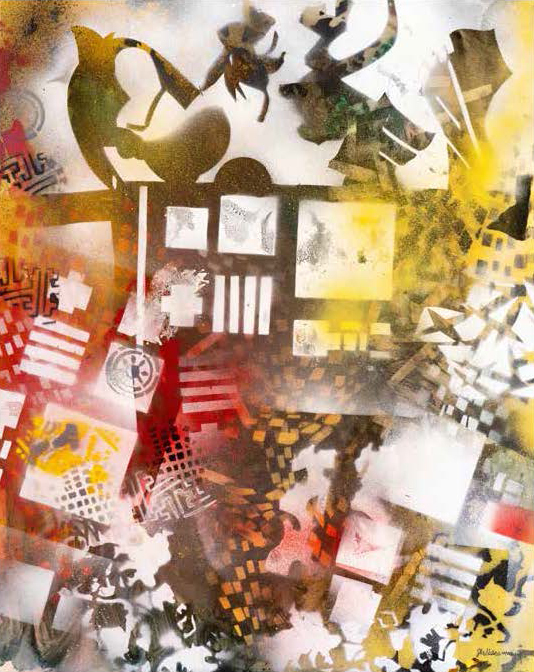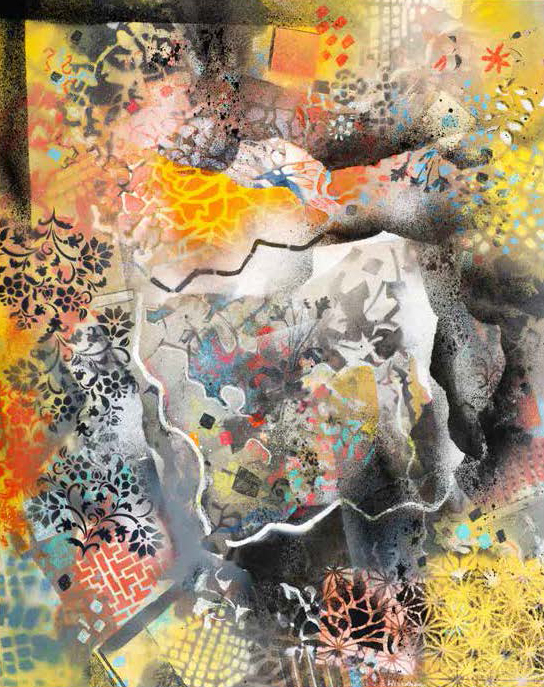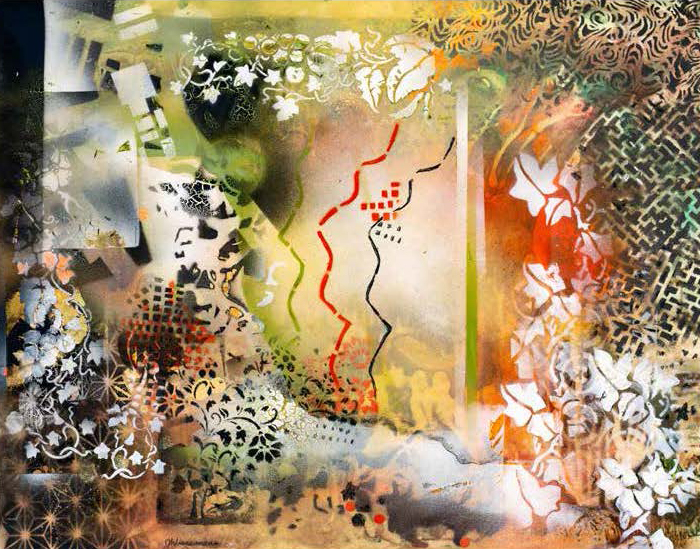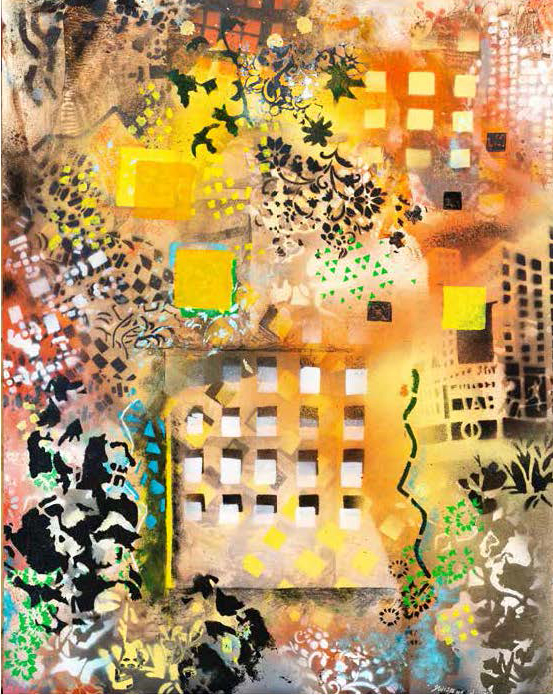As an artist and teacher, John Wissemann, 97, mastered his craft

With a silver-colored pencil in his right hand and various other colors held firm in his opposite hand, John Wissemann meticulously filled in various shapes through a stencil he created. The stencil laid out over a small segment of a much larger piece of artwork depicting a nautical scene of various Maine harbors.
“I know it looks like a painstaking job, but I don’t mind doing it,” he said as a video camera captured him at work as part of a documentary published in 2014.
In the 50-minute video detailing the venerable artists work, Mr. Wissemann described his unique process of creating stencils, using a printing press and hand-coloring with pencils to create magnificent pieces of art. He was just shy of 90 at the time and still creating art that rivaled anything from his youth.
His wife of 69 years, Nancy Wissemann, recently viewed the documentary, now available on YouTube, to see her late husband at work once more.
“It was very comforting for me to watch the other night, because John is in his prime, I would say, in the movie — although he already had a white beard,” she said.
Mr. Wissemann, a World War II Navy veteran who taught art for more than three decades in the Southold School District, helping to nurture the creative minds of generations of children from grade school through high school, and whose artwork was featured in galleries from California to New York City to Maine, died Nov. 22 at his home studio in Southold with wife and daughter by his side. He was 97.
Born in Brooklyn on July 24, 1925, Mr. Wissemann moved to Southold with his parents as a baby. He attended Southold schools where he was a distance runner on the track team in high school, although he ultimately graduated from Jamaica High School in Queens. His family had moved back to New York City as World War II started, and he graduated early from high school to enlist in the Navy at age 17.
He spent nearly all his life on the North Fork, but as his wife joked, he wasn’t really a native since he had been born in Brooklyn.
“He was reminded of this all the time,” she said with a laugh.
It was at Syracuse University after the war that he met his future wife, then Nancy Widrig, who was also an aspiring artist.
The story of how they met is one Ms. Wissemann likely recounted countless times over the next several decades.
A former roommate of Ms. Wissemann’s introduced the two. She was struck by how tan the “very good looking” young man was. She would later learn he had been a lifeguard at Ram’s Head Inn on Shelter Island. The two ended up in the same still-life painting class. One day, the teacher set up a scene with shells and other beach items. Ms. Wissemann remarked how it reminded her of where she had visited her sister on Long Island that summer in Southampton. Mr. Wissemann excitedly shared how he was from nearby Southold.
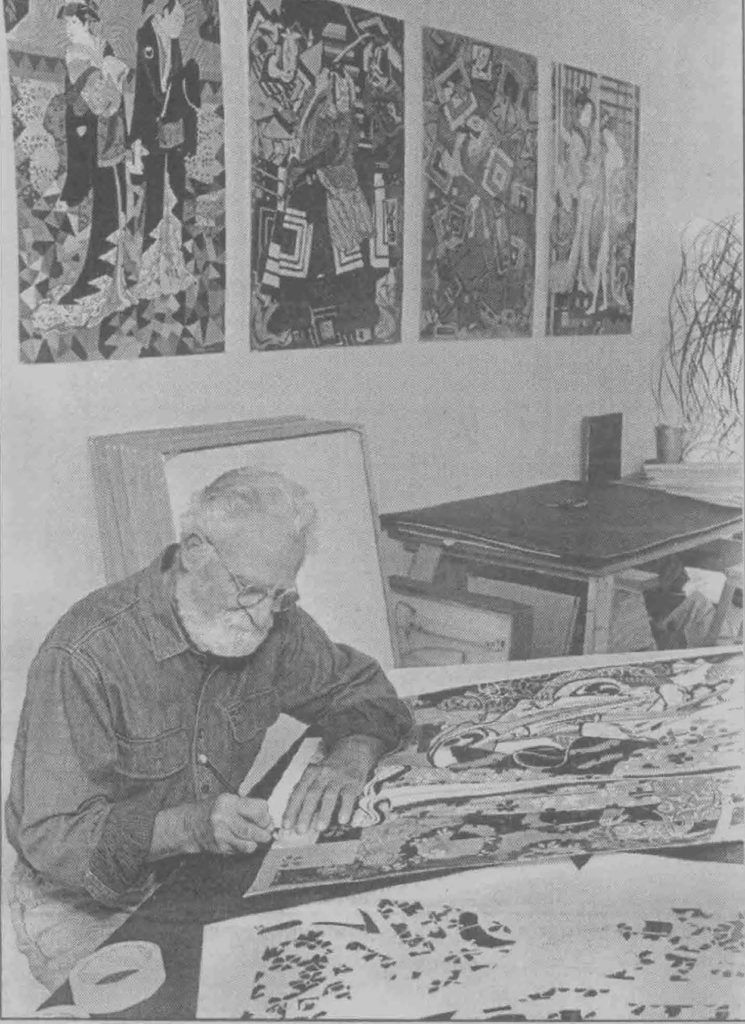
“We got to talking and little did I know, I would wind up living in Southold for 69 years,” Ms. Wissemann said. “Our courting days were mostly going out painting together and we continued to do that right up until last year. It was very much part of what we did.”
Mr. Wissemann specialized for much of his career in watercolor and he went on to become an adjunct professor of watercolors at Southampton College.
The Wissemann’s had three children together: Melanie, Christopher and Timothy.
Their daughter, Melanie Essex, recalled how her dad would spend Saturdays outside painting, often focusing on landscapes and paintings that depicted Greenport’s once-thriving fishing fleet.
“He had this whole sort of traveling studio in the back of our old station wagon and he would go and paint on site,” she said.
Summers, which the family often spent in Maine, were the pivotal time for Mr. Wissemann to focus on his artwork, “his first love,” when school was not in session, his daughter said.
Ms. Essex even had her father as a teacher. She graduated from Southold High School in 1977. Her father had a way of connecting with kids and teaching came naturally to him, Ms. Essex said.
“I think he did have a very intuitive way of connecting to younger people that made them trust him and listen to him,” she said. “And he was never overbearing, so I don’t think he was ever telling anyone what to do.”
His classrooms were a welcoming space filled with art and plants that he loved. He would allow students to bring in records and they would listen to music as they worked on projects.
Ms. Wissemann said her husband had “very high sense of ethics and fairness” that allowed him to be a successful teacher. It didn’t necessarily matter the artistic talent of a student in terms of how he approached a class.
“He opened up the world to the kids through art,” she said. “He felt that art really touched everything and their life could be so much richer if they could be exposed to art and music and theater.”
In one example, he worked with fellow teachers from the English and music departments to coordinate trips to Lincoln Center in New York City and the group would spend time at museums Mr. Wissemann selected.
“I think his whole philosophy of teaching was enriching their lives,” said Ms. Wissemann, who also taught part-time at Oysterponds School in Orient in addition to her full-time work as a painter.
He eventually retired from teaching in the mid-’80s and then focused full-time on his artwork. He worked at home studios in Southold and Maine, where much of his work over the past decade remains now.
“I think he was always happiest when he was in his studio working,” Ms. Essex said, adding that her father was always experimenting as an artist. At one point his career, he was fascinated with the Russian composer Igor Stravinsky and he created a whole series of portraits of him. He was also fascinated with Japanese design and would study Japanese art to create his own take. While he had big shifts in the type of work that inspired him, his methods tended to stay the same from watercolor to printing techniques and colored pencils.
“He never stopped being curious,” his daughter said.
Mr. Wissemann continued working right up through around June when he simply didn’t have the energy to continue. Ms. Essex recalled how in the summer of 2021 her father had an “amazing burst of energy.”
“He started this whole new body of work that was using completely new materials,” she said. “And it was kind of abstract. It was really as surprise. I don’t even know where it came from.”
His artwork was featured at the Caldbeck Gallery in Maine this past May and June.
“It was amazing,” Ms. Essex said.
Mr. Wissemann had suffered from a blood disorder that ultimately left him weaker and weaker. On the Saturday before he died, the family got together in Southold for an early Thanksgiving celebration.
They set up the table in his studio next to the hospice bed and shared stories. At one point late in the evening, he reminisced about ice boating when the bay used to freeze over. Someone asked if he would have to go fast.
He replied, “Well, it was hard not to.”



